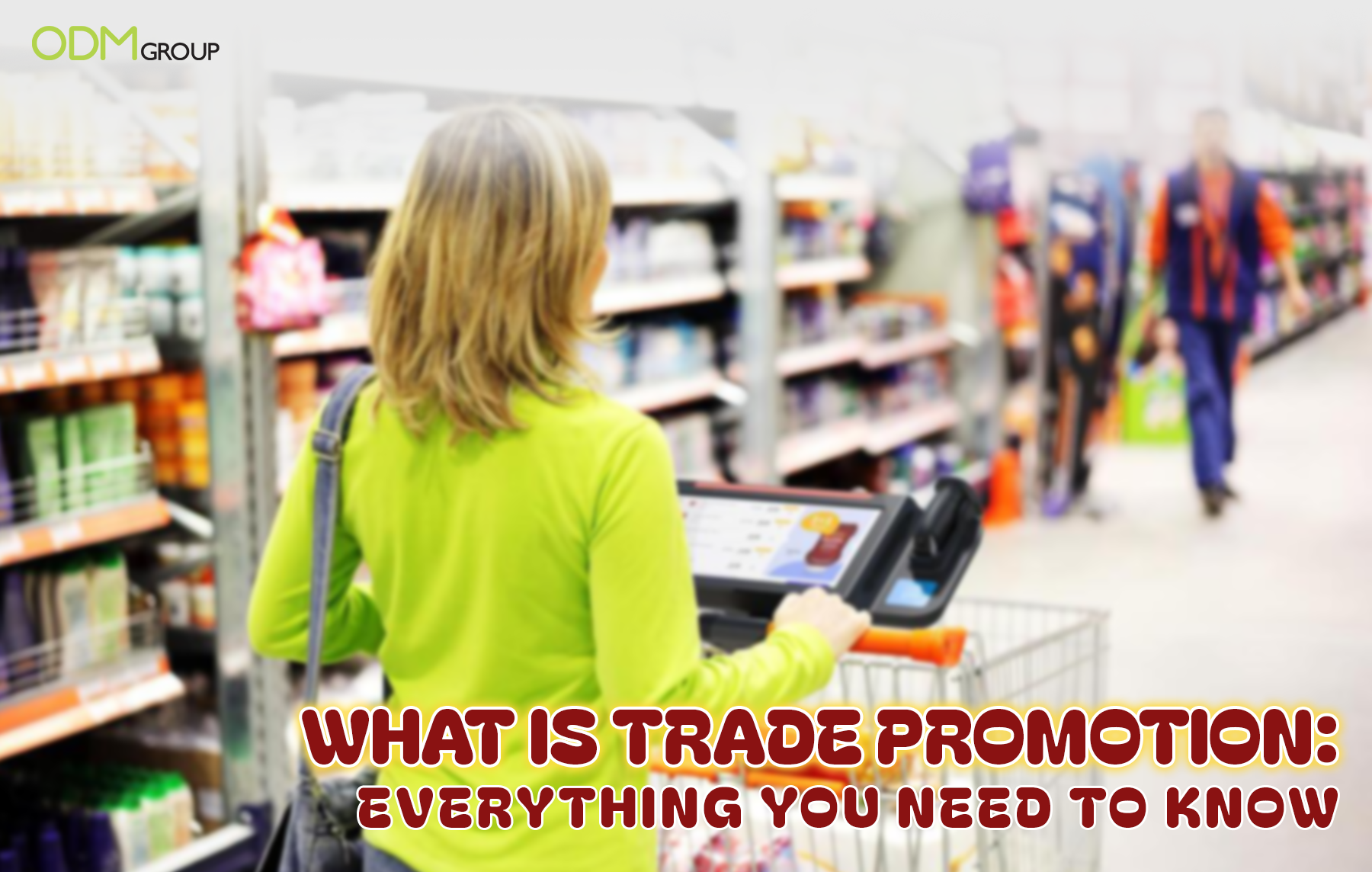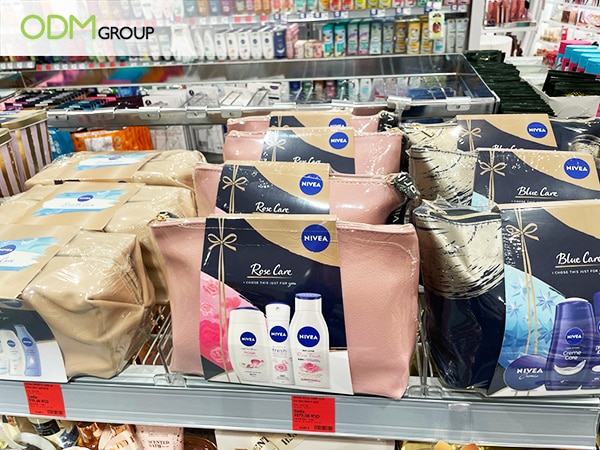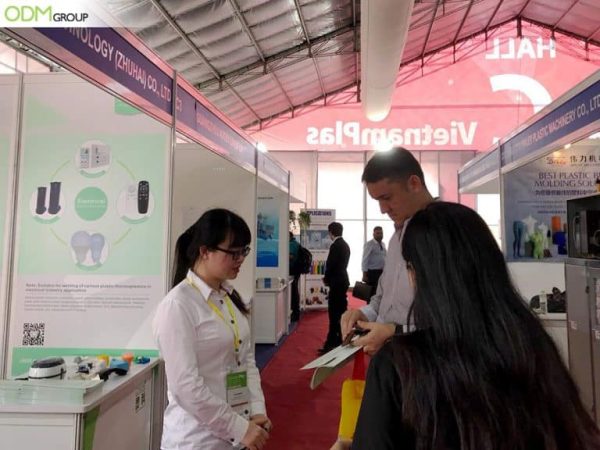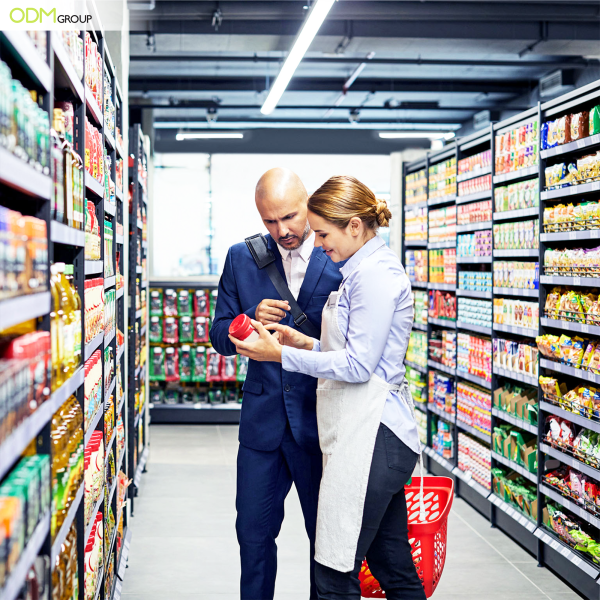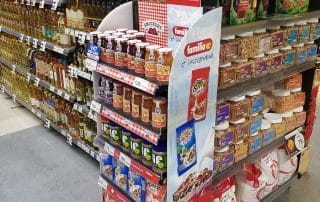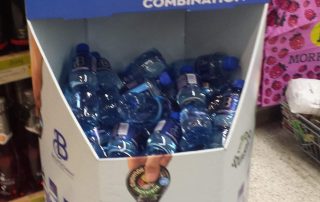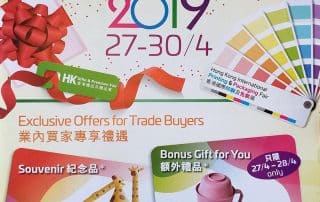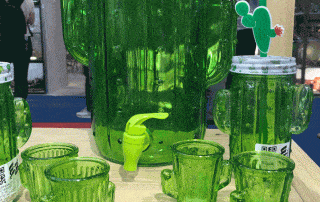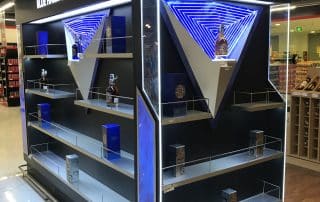Trade promotion is a crucial aspect of marketing strategies. Businesses use it to drive sales, increase brand visibility and build strong relationships with retailers and distributors. Likewise, it aids in attracting new customers, creating product demand and boosting revenue.
In this article, we will explain what trade promotion is. We’ll also talk about its different types, examples, and proven strategies for implementing effective ones.
What Is Trade Promotion?
Trade promotion refers to any marketing activities of brands and wholesalers to customers, primarily retailers and convenience stores. They employ these campaigns with the intention to sell their products or promote their services to end consumers.
Trade promotion takes different forms, such as providing discounts, trade allowances, incentives, and merchandising support.
But more than selling and promoting products, trade promotion helps companies set themselves apart from competitors, increase brand value, and gain trust from partners.
The partnership of these companies can be based on what products or services they provide. For instance, a cosmetic company won’t engage with restaurants. Instead, they will connect with retailers that sell similar products.
Trade Promotion: Types and Examples
As mentioned, trade promotion comes in different forms. Understanding each type can help businesses design and implement strategies that appeal to retailers and consumers. Here are the most commonly used types of trade promotion:
1. Deals and Discounts
Price is important when people buy a certain item, which is also true in the B2B industry. Cost influences a business’s purchasing decision along with the product value for money, quality, and availability.
That said, offering great deals and discounts has become one of the most popular types of trade promotion. Typically, discounts are provided to entice existing customers and attract new ones.
Deals and discounts may involve offering a price deduction in return for larger order quantities or additional marketing support. They can be buy one, get one offers or similar campaigns.
This retail dump bin from Louis Auvergne contains discounted items.
Goods with yellow stickers gave customers a price discount.
These stickers act as visual cues for customers, signalling that the associated items are cheaper than their original or regular retail price.
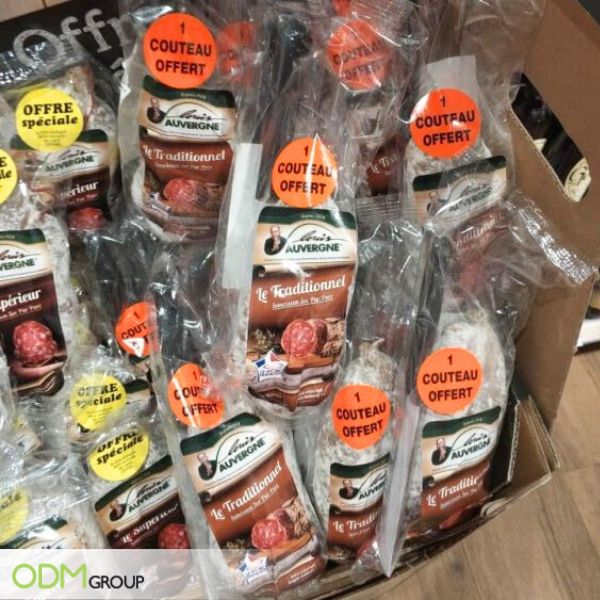
2. In-Store Displays
The placement of your products within a retail set-up may come with some cost, but it is definitely worth it. Thus, having an engaging in-store display to organise your items would be beneficial.
For instance, POP displays are usually placed near the counter or in high-traffic areas within the store. Floor stickers, flag banners, and custom standee displays are other examples of great in-store displays. With the right placement and visual elements, these may help increase traffic and profit.
This custom corrugated display comes in the form of a Knight Bus, a relatively modern invention in the wizarding world.
The striking purple colour of this POP cardboard display is undoubtedly exciting for any fan who already knows its significance.
On the other side, it does not fail to catch ordinary customers’ attention with its bespoke structure.
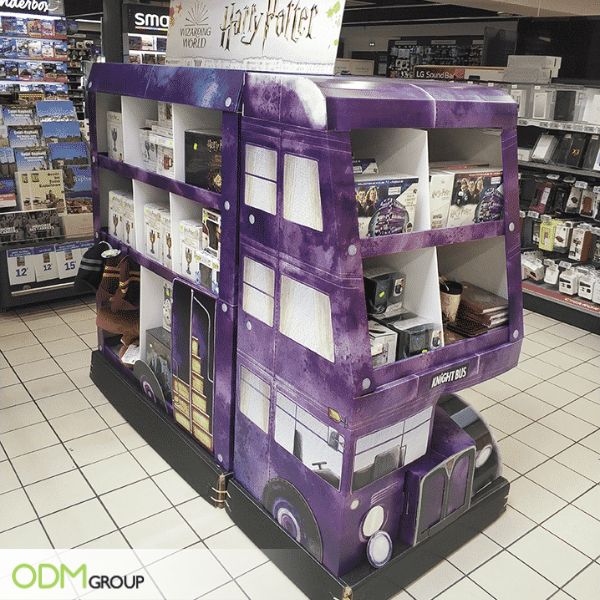
3. Contest and Sweepstakes
Contests and Sweepstakes never fail to excite consumers. They encourage retailers to sell more products, either within participating stores or across branches. Premium merchandise and gift cards are good, but you may also consider providing prizes that you may enjoy more, such as a concert or sports event ticket, spa or salon experience, and international trips.
4. Exclusive Bundles
Creating product bundles is another popular type of trade promotion for B2B businesses to increase sales. Bundles may be designed based on different concepts, such as the season or holidays celebrated.
For example, brands pair one of their slow-selling and moving items with in-demand products. This allows them to sell both items and give customers more value for their money.
Furthermore, some of the FMCG industry’s most common bundle ideas include preset bundles, where products are packaged into a single offer.
Nivea’s promotional offer is a perfect example of a bundle offer.
We’ve seen its promotion in a Serbian store, where customers can purchase Nivea’s beauty gift set along with branded cosmetic bags.
The first bundle set comes with Nivea Shower Gel with a rose scent and almond oil, Nivea’s Rose Touch Body Lotion, and Nivea Fresh Rose Touch Spray.
The second one has Nivea Creamy shower gel, Alcohol-free Protect & Care spray, and Nivea universal cream. Third has Creme Soft Shower Gel with natural almonds, Nivea Smooth Sensation nourishing body milk with shea butter, and Nive Soft cream.
Meanwhile, the fourth one comes with Nivea Aftershave Cream, Antiperspirant Spray, and a Men Gel Cream.
5. Free Samples
Everyone loves free items. Free samples can help retailers encourage new customers to try a product and stimulate demand. Samples are very small quantities of the products for testing. When you offer them for free, it costs you very little but may convert the user into a loyal customer. Also, it increases the brand value.
6. Rebates or Cashbacks
Rebates offer money back to your customers under special conditions. An example is when the brand returns a percentage of the purchase price to the buyer when they purchase a previously agreed quantity or value of goods within a specified time period. Rebates are given after payment, contrary to discounts, which are deducted at the time of purchase.
7. Trade Shows
Participating in trade shows is a good way to showcase your product offerings. These events must be something that retailers and distributors are interested in attending.
During these activities, businesses can interact directly with clients and get their feedback. They also have the chance to meet their top consumers and answer other participants’ queries about particular products.
Furthermore, such exhibitions also help in acquiring new channel members and potential clients as well.
We at ODM always make sure to attend local and international trade shows.
Here’s a glimpse of our trade show visit to Vietnam.
More than 520 international brands from 19 countries and regions were present during this event.
They showcased their latest innovations, technologies and machinery in the industry.
Trade Spending in Trade Promotion
Trade spending is an integral component of business strategies for both retailers and manufacturers. It refers to promotional investments made by manufacturers to incentivize retailers to promote and sell their products.
It’s primary role is to enhance product visibility, stimulate demand, increase market share, and drive more sales. This strategic investment directly impacts a brand’s positioning in the market and its competitive standing, making it a vital aspect of business operations.
Read this blog to learn more about trade spending:
Advantages of Trade Promotion
When done right, trade promotions can create significant changes not just for the business brand value but for ROI as well. It can create sudden demand and make cross and up-selling easier.
But aside than these, here are some of the advantages of trade promotion:
1. Increase sales.
Trade promotions are implemented mainly to create demand and generate sales. Offering discounts or incentives encourages retailers and distributors to promote and sell products that a business offers. This leads to a higher sales volume.
2. Remove excess stocks.
Some products are being sold based on the season. Once a certain holiday or season is over, the possibility of these products being stocked is very high. Thus, offering them in bundles or selling them along with good-selling items is a great strategy.
In addition, offering discounts or using them as contest giveaways may also be considered. In that way, business will avoid having excess stock of the products.
3. Additional order size.
When a business provides incentives as part of its trade promotion, it motivates partner retail stores to order larger volumes. They are encouraged to make bulk purchases to take advantage of the promotion and maximise their profit margin.
Moreover, implementing trade promotions can entice sellers to order and stock more brand products.
4. Stronger relationships.
Trade promotions help strengthen the bonds between businesses, retailers, and distributors. Offering discounts or special promos, on the other hand, may prove a company’s commitment to doing business with the other company.
Furthermore, trade promotions can build trust and loyalty, creating better opportunities in the future.
5. Enhance visibility.
Trade promotions allow businesses to reach a wider audience and showcase their products and services. For instance, running contests, setting up interactive displays, and incentivising clients can help improve brand visibility and make people more interested in their offerings.
Therefore, aside from their existing market, the chances of getting new ones are very high.
6. Gathers important data.
More than just increasing sales and building stronger relationships, trade promotions also allow businesses to gather important details that they can use for their future marketing campaigns. Examples of information they may collect are consumers’ buying behaviours, market trends, and the effectiveness of their promotion.
Analysing these data will help them improve their strategies and make better results.
7. Improve Order to Cash Cycle
Trade promotions can help a business improve its order-to-cash cycle. Discounts, rebates, or other incentives prompt retailers to place orders quickly, reducing the time it takes to process orders and receive cash.
Likewise, trade promotions such as providing discounts on bulk orders will encourage distributors to place larger orders, which will create a significant increase in the business’s cash flow in a short period of time.
Trade Promotion Best Practices
Most companies today focus more on increasing the frequency of their promotions rather than understanding the consumer’s psychology better. A lack of knowledge about their target audience often leads to disappointing results.
Here are some best practices to make trade promotions provide the best outcomes.
Just like any other campaign, initiating trade promotions requires setting clear goals. Do you want to increase sales or order volume? Do you need to create more leads, launch a new product, or expand your market reach?
Identifying and setting specific goals will guide you in creating effective promotion strategies for your business.
Who is your target audience? What are their interests and preferences? What types of retailers and distributors are they? Understanding all these can help you create trade promotions that resonate and cater for their needs.
Thus, doing comprehensive research is crucial in this process.
Communicate with your retail partners to align your campaigns with their goals. Understand their objectives and challenges. Then, you can craft promotions that will benefit them and your business. Consequently, this will help foster stronger relationships between retailers and your business.
Come up with irresistible offers providing tangible value to retailers and end users. Whether bundles, contests or exclusive discounts, ensure that it is attractive enough to encourage increase orders and immediate purchase.
How you implement your promotion is critical to its effectiveness. Ensure that it is planned well before it is sent to the market. Provide retailers and distributors with proper guidelines, duration, and necessary promotional assets to help them execute the promotion accurately.
Be consistent in tracking the progress and performance of your trade promotions. Gather and study sales, orders, and customer and retailer feedback data. Analysing all gathered information can help you create better promotions in the future.
Setting up in-store displays is one of the most common types of trade promotion. That said, having interactive display ideas is essential for successful execution. Here are some creative concepts to add to your next trade promotions:
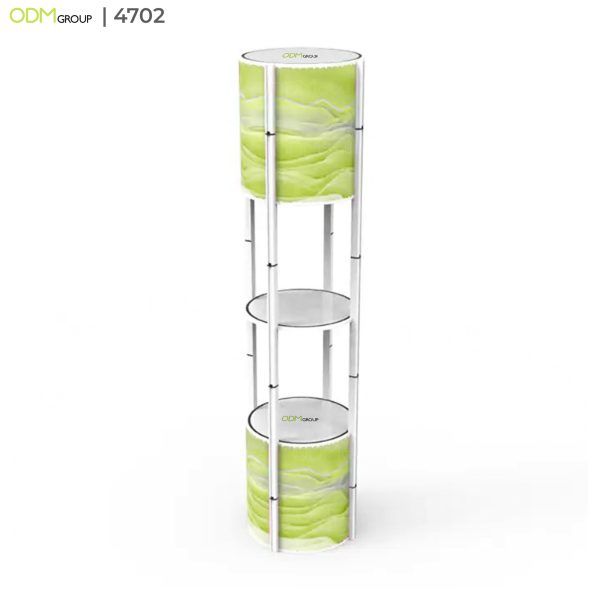
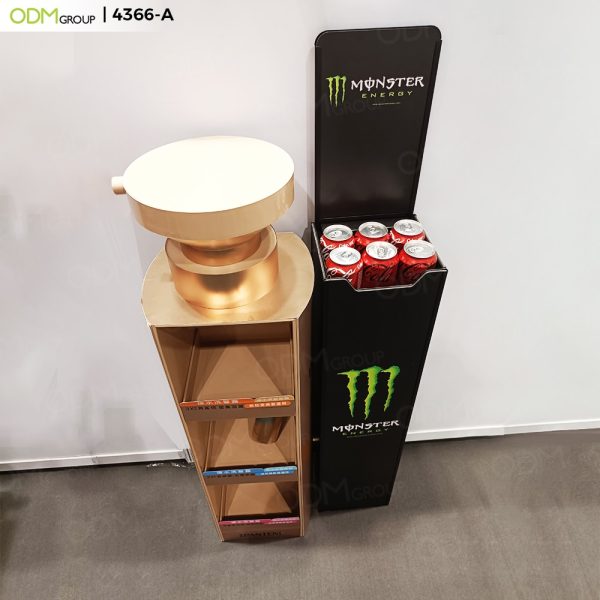
One of the standout features of the 4-in-1 display design is its remarkable versatility.
It can be seamlessly transformed to serve four purposes, making it a true chameleon of promotional displays.
This kind of presentation allows you to use space and efficiently create a visually appealing arrangement.
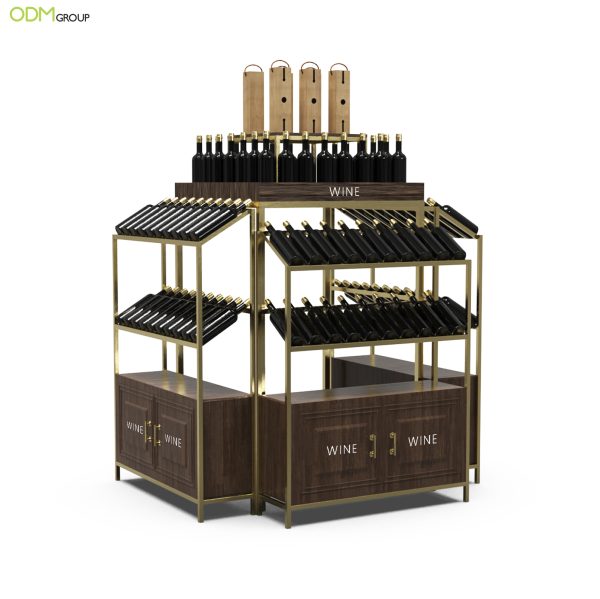
Overall, trade promotions are crucial in any brand-retailer relationship. Identifying which promotion works for your brand and partner retailers is essential for the success of both parties.
By understanding what really trade promotion is, its types and importance, and the best practices, you can create promotions that not only drive sales and build strong relationships but also keep your business in the market for the next years.
If you are ready to gear up your promotions this year, please connect with us. Whether you need creative displays, designs that speak for your brand or custom merchandise, the ODM Group is here to assist you!.
Trade Promotion FAQs
All you need to know about trade promotion!
What is trade promotion?
Trade promotion refers to any marketing activities of brands and wholesalers to customers, primarily retailers and convenience stores. They employ these campaigns with the intention to sell their products or promote their services to end consumers.
What are the different types of trade promotion?
Trade promotion takes different forms, such as providing discounts, trade allowances, incentives, and merchandising support, incentives and many more.
What are the best practices in trade promotion
Some of the best practices when implementing trade promotions are setting clear goals, identifying audience, aligning goals with retailers, designing irresistible offers, organised execution, and monitoring the promotion's performance.
